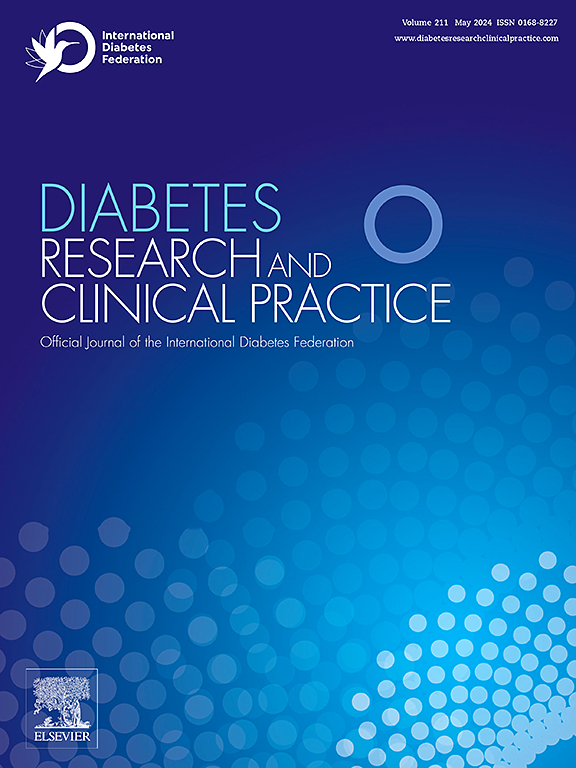Relationship between glycemic variability and the incidence of postoperative atrial fibrillation following cardiac Surgery: A retrospective study from MIMIC-IV database
IF 6.1
3区 医学
Q1 ENDOCRINOLOGY & METABOLISM
引用次数: 0
Abstract
Aims
This study aimed to explore the association between glycemic variability (GV) and postoperative atrial fibrillation (POAF) incidence.
Methods
In this retrospective study, we included patients undergoing cardiac surgeries. GV was calculated as the coefficient of variation of blood glucose and categorized into tertiles based on its distribution. The primary endpoint was the incidence of POAF. Logistic regression and restricted cubic splines were used to assess the relationship between GV and POAF.
Results
5365 patients were included, with a median age of 68.3 years, and 25.5 % were female. 1056 (19.7 %) patients developed new-onset POAF. Compared with the low GV group, moderate GV group (odds ratio [OR], 1.82; 95 % confidence interval [CI]: 1.49–2.22) and high GV group (OR, 2.25; 95 % CI, 1.80–2.82) were significantly associated with a higher incidence of POAF. The area under the receiver operating characteristic curve of GV in predicting POAF incidence was 0.77 (95 % CI: 0.76–0.79). There is a threshold-based nonlinear relationship between GV and the incidence of POAF: when GV was < 24 %, the likelihood of POAF increases with higher GV, whereas when GV ≥ 24 %, further increases did not significantly affect the risk of POAF.
Conclusions
Increased GV is associated with higher incidence of POAF.
心脏手术后血糖变异性与房颤发生率的关系:来自MIMIC-IV数据库的回顾性研究。
目的:本研究旨在探讨血糖变异性(GV)与术后心房颤动(POAF)发生率的关系。方法:在这项回顾性研究中,我们纳入了接受心脏手术的患者。GV被计算为血糖的变异系数,并根据其分布进行分类。主要终点是POAF的发生率。采用Logistic回归和受限三次样条分析GV与POAF之间的关系。结果:纳入5365例患者,中位年龄68.3 岁,女性25.5 %。1056例(19.7 %)患者出现新发POAF。与低GV组比较,中度GV组(优势比[OR], 1.82;95 %置信区间[CI]: 1.49-2.22)和高GV组(OR, 2.25;95 % CI, 1.80-2.82)与POAF的高发生率显著相关。GV预测POAF发生率的受试者工作特征曲线下面积为0.77(95 % CI: 0.76-0.79)。GV与POAF发病率之间存在基于阈值的非线性关系:当GV为 时。结论:GV升高与POAF发病率升高相关。
本文章由计算机程序翻译,如有差异,请以英文原文为准。
求助全文
约1分钟内获得全文
求助全文
来源期刊

Diabetes research and clinical practice
医学-内分泌学与代谢
CiteScore
10.30
自引率
3.90%
发文量
862
审稿时长
32 days
期刊介绍:
Diabetes Research and Clinical Practice is an international journal for health-care providers and clinically oriented researchers that publishes high-quality original research articles and expert reviews in diabetes and related areas. The role of the journal is to provide a venue for dissemination of knowledge and discussion of topics related to diabetes clinical research and patient care. Topics of focus include translational science, genetics, immunology, nutrition, psychosocial research, epidemiology, prevention, socio-economic research, complications, new treatments, technologies and therapy.
 求助内容:
求助内容: 应助结果提醒方式:
应助结果提醒方式:


